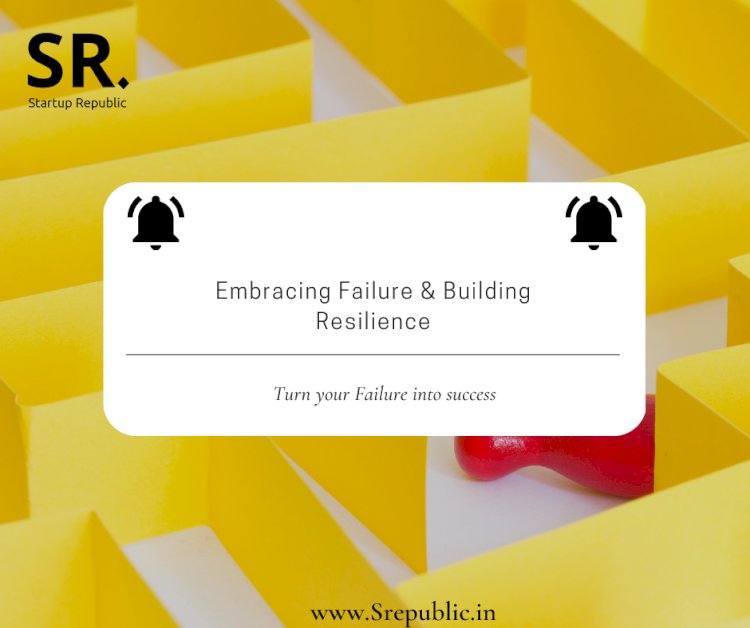
The Art of Pivoting: When and How to Change Your Startup Idea (And Why It’s Your Smartest Move)
The startup journey is often depicted as a straight line from brilliant idea to massive success. But any seasoned entrepreneur will tell you it’s more like a winding, often bumpy, road with detours and U-turns. One of the most powerful and strategic moves an early-stage company can make is a pivot.
Far from being a sign of failure, a pivot is a calculated, strategic shift in your startup’s direction, often based on new learnings from the market, your customers, or even your own team. It’s about adapting, learning, and ultimately, increasing your chances of finding that elusive "product-market fit."
In this comprehensive guide, we’ll demystify the art of pivoting, helping you understand when to consider a change, how to execute it effectively, and why it might just be the smartest decision you ever make for your entrepreneurial venture.
What Exactly is a "Pivot"?
Imagine you’re playing basketball. You have the ball, one foot firmly planted on the ground, and you spin around the other foot to change direction, find an open pass, or get a better shot. That’s a pivot in sports, and it’s a perfect analogy for startups.
In the startup world, a pivot means:
- Keeping one foot firmly planted on your core learning: This could be your existing technology, your team’s expertise, your initial customer insights, or a specific problem you’ve identified.
- Shifting your other foot (or the rest of your business model): This might involve changing your target customer, the problem you’re solving, your product’s features, or even your revenue model.
A pivot is NOT:
- Quitting: It’s not giving up on your entrepreneurial dream; it’s refining it.
- Randomly chasing a new idea: It’s a data-driven, strategic decision, not a whim.
- Minor iteration: While continuous improvement (iteration) is vital, a pivot is a more significant change in direction.
Why Pivoting Isn’t Failure (It’s Smart Strategy)
Let’s debunk a common myth: Pivoting is not a sign that your original idea was bad or that you’re somehow incompetent. In fact, some of the world’s most successful companies started with entirely different ideas and found their true calling through a pivot.
Consider these famous examples:
- Instagram: Originally called Burbn, it was a complex location-based check-in app with gaming elements. The founders noticed users loved its photo-sharing feature, so they pivoted to focus solely on that, stripping away everything else.
- Slack: Born out of a gaming company called Tiny Speck, whose game "Glitch" failed. The team realized the internal communication tool they built for themselves was incredibly valuable, so they productized it.
- YouTube: Started as a video dating site inspired by Hot or Not. When that didn’t gain traction, they pivoted to become a general video-sharing platform.
- Shopify: The founders initially wanted to open an online snowboard shop. Frustrated with the existing e-commerce platforms, they built their own. When others started asking to use it, they pivoted to become an e-commerce platform provider.
These stories highlight a crucial lesson: Adaptability is a superpower in the startup world. The market is constantly changing, customer needs evolve, and what seems like a great idea on paper might not resonate in reality. Pivoting allows you to:
- Reduce risk: Instead of stubbornly sticking to a failing path, you course-correct.
- Find product-market fit: The ultimate goal of any startup – finding a strong demand for what you offer.
- Conserve resources: Stop wasting time, money, and energy on an idea that isn’t working.
- Re-energize your team: A new direction can bring renewed focus and motivation.
When to Consider a Pivot: Red Flags to Watch For
Recognizing the need to pivot is often the hardest part. It requires humility, objectivity, and a willingness to confront uncomfortable truths. Here are common "red flags" that signal it might be time to consider a strategic shift:
- Lack of Product-Market Fit (PMF): This is the holy grail for startups. If you’re not seeing genuine excitement, repeat usage, or organic growth from your early users, you likely haven’t found PMF.
- Signs: Users churning quickly, low engagement metrics (e.g., daily active users, time spent), difficulty explaining your value proposition clearly.
- Minimal or No Customer Traction: You’ve built it, but they’re not coming. Or if they are, they’re not sticking around.
- Signs: Slow user growth despite marketing efforts, high bounce rates, low conversion rates from trial to paid.
- High Customer Acquisition Cost (CAC) vs. Low Customer Lifetime Value (LTV): If it costs you more to acquire a customer than they’ll ever be worth to you, your business model is unsustainable.
- Signs: Marketing spend isn’t yielding profitable returns, customers aren’t upgrading or staying long enough to justify acquisition costs.
- Market is Shrinking, Saturated, or Non-Existent: Your initial market analysis might have been off, or the market has evolved rapidly.
- Signs: No clear target customers, too many competitors offering the exact same thing, regulatory changes making your market difficult.
- Customer Feedback is Consistently Negative or Indifferent: Listen to your customers! If they’re telling you the product doesn’t solve their problem, or worse, they’re just not saying anything at all, that’s a problem.
- Signs: Repeated complaints about core features, users asking for features that fundamentally change your product’s purpose, or complete silence from users.
- Team Burnout or Demotivation: If your team is constantly hitting walls, morale is low, and nobody believes in the current direction anymore, it’s time for a change.
- Signs: Lack of enthusiasm, high turnover, constant frustration without progress.
- New Competition or Disruptive Technology: A major competitor enters your space, or a new technology renders your solution obsolete.
- Signs: Competitors gaining rapid market share, new tech making your solution too expensive or slow.
- Your "Gut Feeling" (Validated by Data): Sometimes, deep down, you just know it’s not working. While gut feelings alone aren’t enough, if combined with some of the data points above, it’s a strong indicator.
How to Execute a Successful Pivot: A Step-by-Step Guide
Pivoting isn’t just about throwing darts at a new board. It’s a structured process that requires careful thought, data analysis, and decisive action.
Step 1: Data, Data, Data! (The Discovery Phase)
Before you change anything, understand why your current approach isn’t working.
- Analyze Your Metrics:
- User engagement: Are users logging in? How often? What features do they use most/least?
- Retention: Are users sticking around over time?
- Conversion rates: Are trials turning into paid customers?
- Customer acquisition cost (CAC): How much does it cost to get a new customer?
- Lifetime value (LTV): How much revenue does a customer generate over their lifetime?
- Talk to Your Customers (and Non-Customers):
- Conduct user interviews: Ask open-ended questions. Why did they sign up? What problem were they trying to solve? Did your product help? Why did they stop using it?
- Survey your audience: Gather quantitative and qualitative feedback on perceived value, pain points, and desired features.
- Interview non-customers: Why didn’t they sign up? What alternatives are they using?
- Market Research:
- Competitor analysis: What are others doing? Where are their strengths and weaknesses?
- Industry trends: Are there emerging opportunities or threats?
- Identify adjacent markets: Could your existing tech or expertise solve a similar problem for a different audience?
Step 2: Brainstorm New Directions (The Ideation Phase)
Based on your data and insights, start thinking about alternative paths.
- Leverage Your Core Assets: What unique skills, technology, or insights does your team already possess? Can these be applied to a different problem or market?
- Revisit Problem Statements: Did you correctly identify the problem? Is there a deeper, more painful problem you could solve for your target audience (or a new one)?
- Think Broadly: Don’t limit yourself to minor tweaks. Consider different customer segments, different problems, or even a different business model.
- Generate Multiple Hypotheses: Don’t settle on the first idea. Brainstorm 3-5 distinct pivot possibilities.
Step 3: Define Your New Hypothesis (The Planning Phase)
For each promising pivot idea, clearly define the new direction.
- The New Problem: What specific problem are you now aiming to solve?
- The New Solution: How will your product/service address this problem? What’s the core value proposition?
- The New Target Customer: Who are you now serving? Be as specific as possible.
- The New Business Model: How will you generate revenue? (Subscription, transaction fee, advertising, etc.)
- Use Tools Like the Lean Canvas or Business Model Canvas: These frameworks help you concisely map out your new idea’s key components and identify potential gaps or risks.
Step 4: Build a Minimum Viable Product (MVP) (The Execution Phase)
You don’t need to build the full, polished product of your new idea. The goal is to test your new hypothesis as quickly and cheaply as possible.
- Focus on the Core Value: What’s the absolute minimum set of features needed to test if your new solution resonates with your new target customers?
- Don’t Over-Engineer: Use existing tools, manual processes, or simple prototypes if possible.
- Get it Out Fast: The faster you launch, the faster you get real-world feedback.
Step 5: Test, Learn, and Iterate (The Validation Phase)
Once your MVP is out, the real work begins: validating your new direction.
- Measure Everything: Set clear metrics for success for your new MVP (e.g., sign-ups, engagement, retention, customer feedback).
- Gather Feedback Relentlessly: Talk to your new early adopters. What do they like? What’s missing? What’s confusing?
- Be Prepared to Adjust Again: A pivot isn’t necessarily a "one and done" event. Your first pivot might reveal the need for further adjustments or even another pivot! The goal is continuous learning.
Step 6: Communicate Clearly (The Internal & External Phase)
A pivot impacts everyone involved. Clear communication is essential.
- With Your Team: Explain the "why" behind the pivot, the new vision, and how everyone’s roles contribute. Get their buy-in and enthusiasm.
- With Your Investors (if applicable): Be transparent. Explain the data that led to the pivot, the new strategy, and why you believe this path offers a better chance of success. Show them you’re adaptable and data-driven.
- With Your Customers: Depending on the nature of the pivot, you might need to inform existing customers about changes to the product, service, or even support. Frame it positively as an evolution.
Common Types of Pivots
While every pivot is unique, many fall into common categories:
- Customer Segment Pivot: You keep the product, but change who you’re selling it to. (e.g., software for large enterprises becomes software for small businesses).
- Problem Pivot: You realize your customers have a different, more pressing problem than the one you initially set out to solve, so you shift your solution to address that new problem.
- Technology Pivot: You have a unique technology, but the original application isn’t working, so you find a new use case for your tech.
- Business Model Pivot: You change how you make money (e.g., from subscription to transaction fee, or from B2C to B2B).
- Zoom-In Pivot: You realize a single feature of your product is so valuable it can become the whole product. (e.g., Instagram’s pivot from Burbn).
- Zoom-Out Pivot: Your single product is too narrow, and you expand it to be a broader platform or suite of solutions.
- Platform Pivot: You move from an application to a platform, allowing others to build on top of your technology, or vice-versa.
Conclusion: Embrace the Power of Change
The startup world isn’t about being right the first time; it’s about being right eventually. The art of pivoting is a testament to an entrepreneur’s resilience, strategic thinking, and commitment to solving real problems. It’s about being humble enough to admit when something isn’t working and courageous enough to make a significant change.
Don’t view a pivot as a setback, but as a strategic advantage. By understanding when to change your startup idea and how to execute that change thoughtfully, you dramatically increase your chances of navigating the unpredictable waters of entrepreneurship and ultimately building something truly valuable and impactful. So, keep learning, keep listening, and be ready to pivot your way to success!



Post Comment